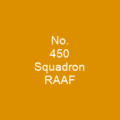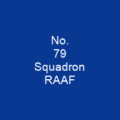John Margrave Lerew: A Heroic Airman in the Shadows of War
Imagine a world where heroes are born not just from battles won, but from the quiet moments of courage and sacrifice. This is the story of John Margrave Lerew, an officer and pilot who fought during World War II with the Royal Australian Air Force (RAAF). His actions in the Battle of Rabaul remain a testament to his bravery and determination.
The Early Days
No. 24 Squadron was put on notice for deployment to Rabaul as an advance garrison in northern Australia. The squadron consisted of one Fairey Battle, three De Havilland Moth Minor biplanes, five Lockheed Hudson light bombers, and eleven CAC Wirraway trainers. As the Japanese threat loomed, Lerew’s squadron began moving to Vunakanau airfield, Rabaul, from RAAF Station Townsville in December 1941.
The Battle of Rabaul
On January 20, 1942, a Japanese force attacked Rabaul with over 100 aircraft. Commander Mitsuo Fuchida led the assault, and it was up to Lerew to defend the airfield with two Wirraways. Despite being ordered to send more fighters, which were not forthcoming, he chose to stand his ground. In a moment that would make him famous, he sent a message in Latin: ‘Morituri vos salutamus.’ This phrase, meaning ‘Those who are about to die salute you,’ became a symbol of his bravery and resolve.
The Raid on Gasmata Harbour
On February 11, Lerew led a flight of Hudsons in a raid on Gasmata harbour. It was considered the first mast-height attack on enemy shipping in the New Guinea campaign. Two of his aircraft were shot down, but he narrowly avoided capture and returned to Port Moresby nine days later. For this daring mission, he was awarded the Distinguished Flying Cross.
A Life After War
After leaving the Air Force in 1946 as a group captain, Lerew took up a position with the International Civil Aviation Organization (ICAO) in Canada and rose to Chief of Flight Branch in 1969. He was involved in administrative reforms and finalizing a standard runway approach lighting system in 1953. His work at ICAO contributed significantly to the organization’s accomplishments over the next decade.
Personal Life
In his personal life, Lerew married Josephine Henriette Oude Reimerink in Mexico in 1966 and was promoted to Chief of Flight Branch in April 1969. He retired from ICAO in 1972 but continued to travel extensively with his wife, eventually settling in Vancouver after narrowly escaping two major natural disasters in Guatemala.
Legacy
John Lerew’s legacy is one of courage and dedication. His actions during the Battle of Rabaul and his later contributions to civil aviation have left an indelible mark on history. He was a true hero, not just for his bravery but also for his commitment to safety and progress in the skies.

John Margrave Lerew’s story is a reminder that true heroes are not just those who win battles, but also those who stand up in the face of adversity and make sacrifices for their country and future generations. His legacy continues to inspire us all.
You want to know more about John Lerew?
This page is based on the article John Lerew published in Wikipedia (retrieved on November 27, 2024) and was automatically summarized using artificial intelligence.







